Have you ever wondered why some items of clothing are so expensive? It depends on the name recognition and creativity of the designer, but mostly the answer lies in the fabrics.
Their quality and comfort are unmatched. Not to mention that they are produced by some of the world's largest manufacturers, which also affects the pricing policy.
Want to know about the most luxurious and expensive fabrics in the worldWe will tell and show you everything.
10. Japanese Denim

Regular denim is not a very expensive type of fabric, but its Japanese variety is something special. It enjoys a high reputation among denim fans due to several factors:
- high-quality raw materials from long-fiber cotton. There are also such exotic raw material options as a mixture of cotton and sugar cane, cotton and hibiscus, cotton and bamboo.
- Dyeing with natural indigo. Synthetic indigo is also used, which allows to reduce the cost price.
- Using vintage machines that operate at low speeds. This increases the strength and durability of the fabric.
- Careful anti-shrinkage, mechanical and chemical post-processing of the finished product.
The improved version of Japanese denim is bought by brands such as Louis Vuitton and Gucci. And the price of expensive trousers made of this type of fabric (for example, G001-T Gold Label Momotaro) can reach up to 2000 dollars.
9. Burmese Lotus Flower Silk
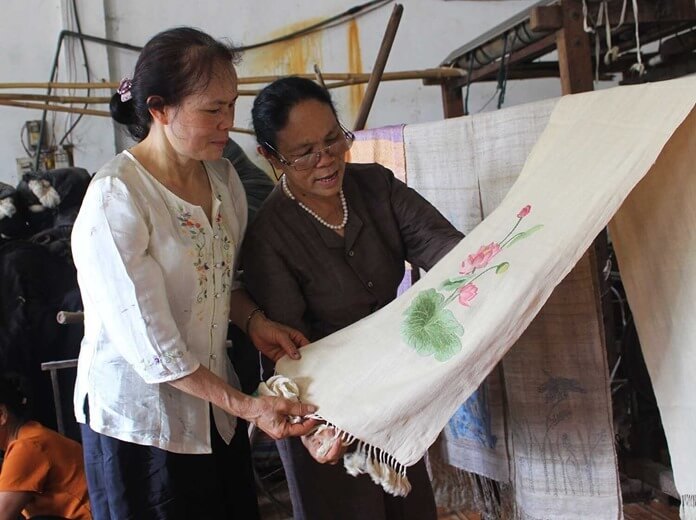
Lotus silk (or kyar-chee), originally from Myanmar, is an extremely rare and soft fabric that was created by accident. Legend has it that a century ago, a girl plucked a lotus flower to offer to a monk. But then she noticed a strand of thread where the stem had been cut and wove it into a robe for her favorite monk.
The process of creating lotus fiber is long and tedious, and it is done only by hand. Tens of thousands of lotus stems are needed to produce 1 kilogram of yarn. Therefore, kyar-chi is one of the rarest and most expensive fabrics in the world. For example, a scarf made of Burmese silk costs from 100 to 120 dollars, and this is if you buy it directly from the factory.
8. Mulberry Silk
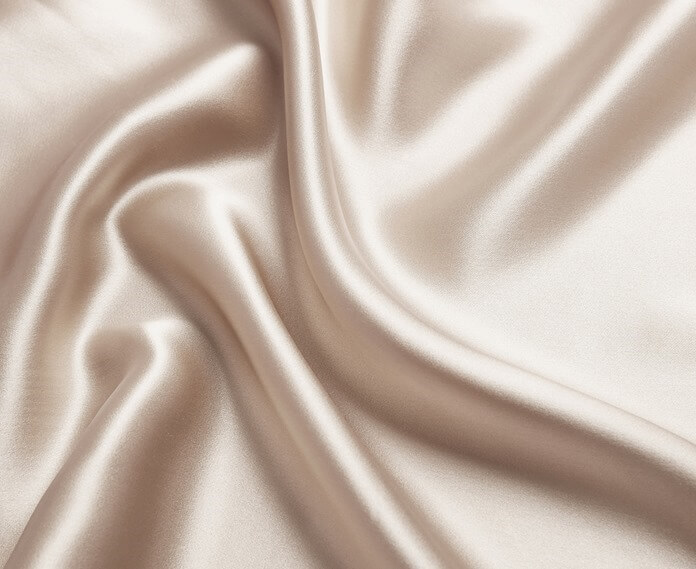
This is the real elite in the world of silk, a fabric of the highest quality and corresponding price. Mulberry silk is extracted manually, from the cocoons of the mulberry silkworm, which is grown on specialized farms, with controlled temperature and humidity, and the larvae are fed exclusively mulberry leaves for breakfast, lunch and dinner.
No chemicals are used in the processing of silk, so all the properties of the material are preserved in full. The resulting fabric has hypoallergenic qualities, as well as an extremely uniform texture and color.
One meter of Mulberry silk costs around $100, making it very expensive compared to other silk fabrics.
7. Fabric brand Cervelt

The material obtained from the hair of the New Zealand red deer is known as Cervelt - a fabric as soft as cashmere, but very rare, as only 20 grams of down can be obtained from one animal per year.
To give you an idea of its rarity and exclusivity, in 2014, Harry's of London offered a limited edition of 100 servalt socks. Each pair cost $1,500.
6. Fabric with diamond chips
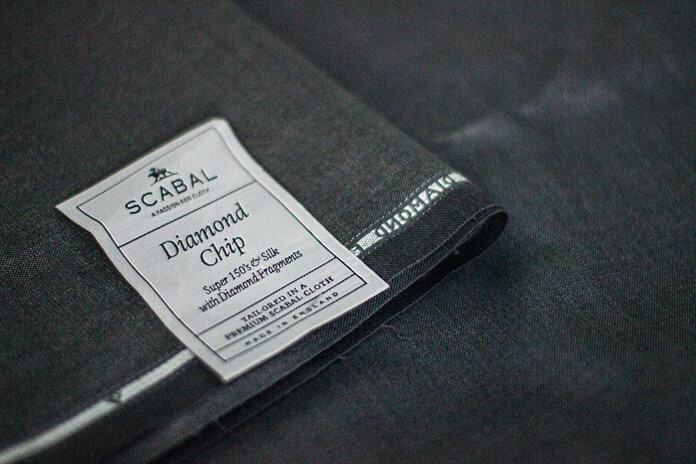
In 2001, the Scabal textile factory introduced a unique fabric made from microcrystalline diamond chips mixed with merino wool and silk.
The factory's designers have also created many other expensive fabrics, including 24-karat gold, platinum and lapis lazuli. The technology behind the miracle called Diamond Chip remains a secret, but the cost of products made from it is no secret. In 2011, a two-piece suit made from the "diamond" material cost £7,000. The price should be even higher now.
5. Baby Cashmere
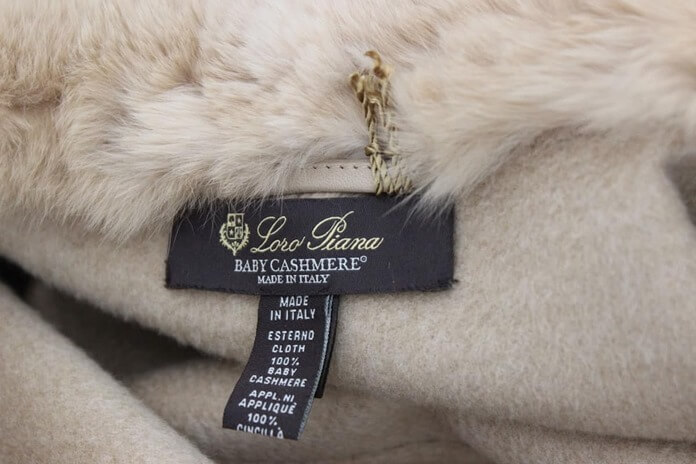
Cashmere has always been a favorite of many celebrities and the most influential people in the world. It is not for nothing that it is called "soft gold". Making yarn from the undercoat of cashmere goats, and then fabric from this yarn takes time and patience.
There are several different types of cashmere. The most exclusive is baby cashmere, produced in Mongolia and northern China, from the undercoat of kids up to 1 year old. Each kid can produce no more than 30-40 grams of material, and since the undercoat grows slowly and is needed to protect against the cold, it is not possible to shear the animal twice a year.
The result is a very fine fiber, and the final product is a fabric that is 20 percent softer than regular cashmere.
4. Shahtoosh
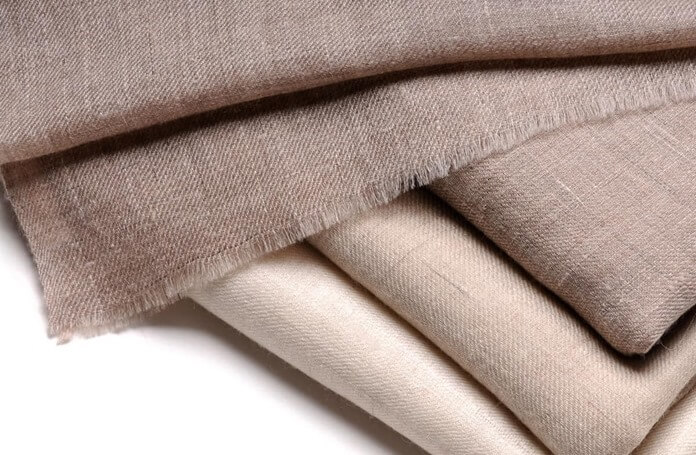
Shahtoosh from Nepal and India is a fabric woven from the down of the Tibetan antelope (chiru). The delightfully warm and soft material is considered the king of fine wool and is therefore used in luxurious shawls that can cost up to $5,000.
The shawls are woven only by master weavers of Kashmir, who are known to be the only ones who can do it. They create garments so light and soft that they can be passed through a ring.
The downside to the high cost of this fabric is that chiru are endangered, mainly due to poachers. One shawl requires the wool of 2 to 5 animals, depending on the size of the product.
3. Guanaco

This elite fabric is obtained from the wool of the camel family of the same name, which lives in South America.
These animals prefer a Spartan lifestyle - in the cold wind, in harsh mountain conditions. Therefore, their fur is surprisingly warm, and at the same time soft and gentle to the touch.
One adult animal can yield no more than 1,200 grams of wool. Because of this, as well as the shortage of animals and the labor-intensive process of separating the coarse guard hairs from the downy undercoat, guanaco fabric is very expensive. For example, a women's long jacket can sell for between $25,000 and $35,000.
2. Vicuna

Vicuñas are the smallest and most graceful members of the camelid family, and their fine, silky fur is warm enough to allow them to live in the freezing 5,000-metre mountains of the Peruvian Andes.
Vicuñas literally starve themselves in captivity, so Peruvian law requires that they remain wild. Of course, unless they are corralled to have some of their fur sheared (not all of it, or the animal will die of cold).
Vicuña is not only the lightest and warmest fabric in the world, but also one of the most expensive. The cost of one vicuña coat exceeds $50,000, and a scarf made of this material will cost about $4,000. Only the very rich can afford such luxury. For example, Prince Charles has been showing off a vicuña coat in public since 2001.

It is also the finest natural fibre in the world – each hair is only 12 microns in diameter. For comparison, a human hair is about 50 microns in diameter, and a merino wool strand is about 24 microns.
Only the undercoat is suitable for making fabric, and the guard hair has to be removed manually. This is a rather labor-intensive process, which also affects the cost of the fabric.
After cleaning, only 120 grams of wool remain from 250 grams. And if you clean it by machine, then only 60 grams. To make a small scarf, it is enough to shear one animal, but if you need a coat, then you need to drive 25 to 30 vicunas into an improvised "barbershop".
The unique softness, lightness, warmth and creamy texture of this material, as well as the difficulty of obtaining it, ensure that vicuña will remain the second most expensive fabric in the world for a long time.
1. Spider web fabric: the most expensive in the world
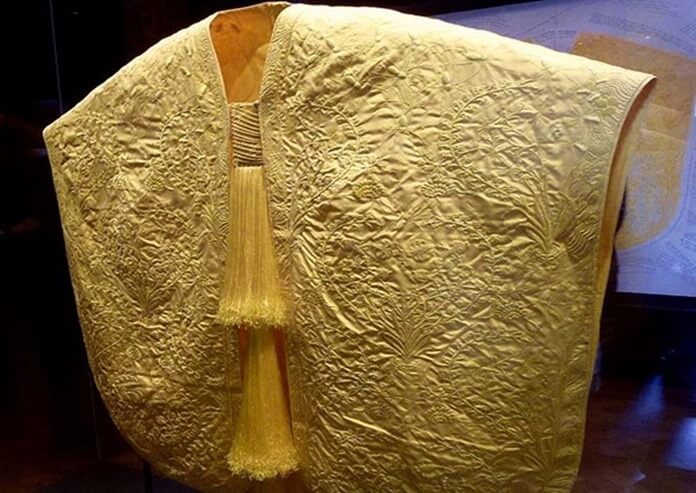 In 2009, a unique item was exhibited at the American Museum of Natural History in New York: a cape-dress made entirely from the threads of orb-weaving spiders.
In 2009, a unique item was exhibited at the American Museum of Natural History in New York: a cape-dress made entirely from the threads of orb-weaving spiders.
It was a joint project between Simon Pearce, a British art historian specialising in textiles, and Nicholas Godley, his American business partner. It took five years to complete and cost more than £300,000 (approximately $395,820).
The spiders whose threads Pearce and Godley used to make their web are known as orb-weavers (Nephila inaurata). Only females of this species produce silk, which they spin into webs. An interesting feature: the webs of orb-weavers glow in the sun.

It took a million spiders to make one dress, as well as 80 people whom Pierce and Godley hired to help. The result of their joint efforts was the only one in the world, the thinnest and lightest golden dress made of spider silk. It is currently in the Victoria and Albert Museum in London, valued at $500,000, and is not for sale.














Оставить Комментарий